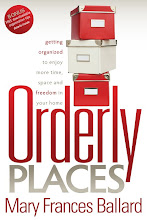It is hot and humid but it is July after all. And we have a plan for this year. We need to continue removing a bag of stuff each week and eliminating an hour of electronics each week. Admittedly the electronic entertainment becomes more important when it is too hot to go outside. Here are some tips for organizing the linen closet and things to consider this month to keep you cooler.
- Purge the linen closet of those items that are worn out or never used. Animal shelters and clinics often use those for bedding or to dry animals.
- Consider bundling bed linens and bath linens. These can be stored in containers or on shelving. If items are rolled they can be placed upright in a container so it is easier to pick one out without disturbing all of them. This is especially helpful for children who have their favorite towel or for picking the right size sheets from among all of them.
- If there are many sizes of mattresses, consider color coding the linens for each size. If all are the same size, consider one color to make laundry sorting easier.
- Bulky blankets and other items used less often can be placed in vacuum bags to reduce the amount of space they take. They can also be stored in containers under beds.
- If space is limited in the linen closet, consider storing sheet sets in the bedroom where they are used. They can be placed in closets, in storage bins under the bed or even between the mattress and bed springs.
- Refold items not used often so they do not develop wear on their creases.
- Store extra pillows on the top shelf. They are lightweight and fill the space without taking up valuable room on shelves where heavier items are easier to manage.
- Place bulky items or equipment in the bottom of the linen closet.
- Remove as many stored items as you can from the floor. Bags and boxes that sit on the floor or against walls for months or years can harbor mold and mildew, especially in hot, humid summer months.
- Change the filter on the a/c unit. Spring and summer pollen can accumulate quickly as doors and windows are opened more often.
- Clean around the refrigerator and other major appliances to keep them running cooler. Try not to store items around or over them that would block proper ventilation for their motors.
- Run the dryer late in the day or evening if it is located in the house. Better yet, use clothes lines if you have them for larger or heavier items.
- Schedule outside activities or workouts early in the day or after sundown. Better yet, begin an indoor routine. Malls open early for walkers.
- Begin or continue indoor hobbies during scorching temperatures: scrapbooking, reading, computer programs, sewing, etc.
- While you are inside, set a goal to clean/organize one drawer a day, one closet a week, one room this month. Put it on your calendar..
- Keep a happy attitude. Remember we were looking forward to July last January.

